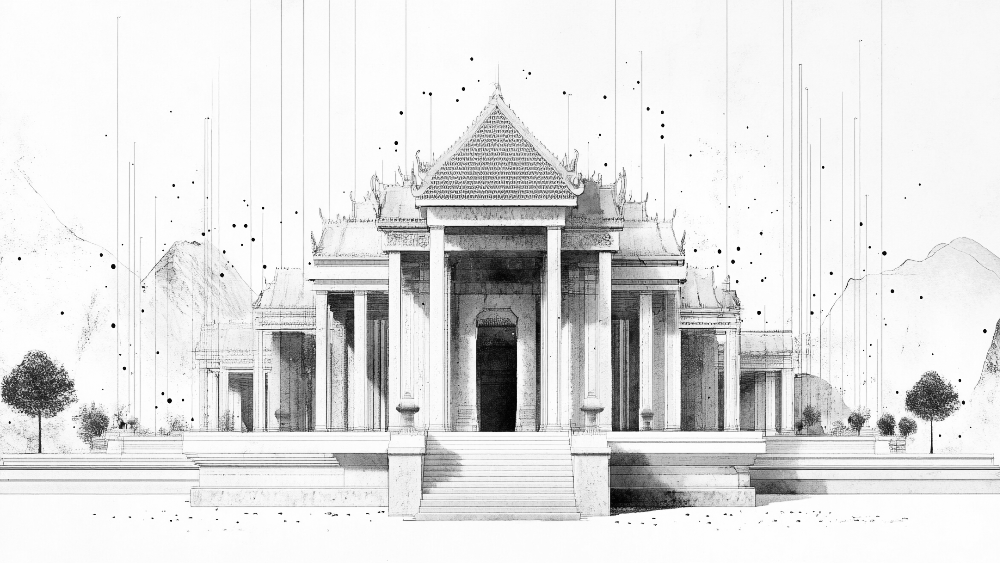Dispatches from Thailand: Nomos Offsite V
On the week of November 3rd to 10th, the Nomos team gathered together in a picturesque villa on the outskirts of Bangkok, Thailand.

On the week of November 3rd to 10th, the Nomos team gathered together in a picturesque villa on the outskirts of Bangkok, Thailand. For some veteran core contributors, this was Nomos’ fifth offsite - a biannual coworking session held to solve our team’s most stubborn problems. For others, this was a chance to meet colleagues they’d only ever seen on video chat. With a packed itinerary planned for the offsite, the week ahead would prove to be a fast-paced prelude to Devcon 7 in Bangkok.
Workgroups
At the Thailand offsite, we followed a familiar pattern for effective in-person collaboration. First, we split ourselves into three specialised workgroups - each one focused on a key area of Nomos that required special attention. These were known as the Blendnet, PACTs, and Zone Architecture groups. Each workgroup gave presentations at the beginning of the offsite, getting the whole team up to speed with the current state of the project. Then, the groups split up to focus on their work, tackling problems and sharing insights. Finally, the team regrouped on Saturday to give presentations describing their progress and any breakthroughs they achieved. This progress is summarised in the remainder of this section.
Make sure to consult the Network Architecture section on the Nomos website for an overview of the terms and concepts used below.
Blendnet
The largest of the workgroups, the Blendnet group worked on the propagation of messages through the Nomos network via intermediary node paths. This feature is crucial for Nomos’ ability to prevent observers from discerning communication patterns. Due to its size, the group was split into three “tracks”:
- The Design track worked on solving several crucial problems with the original design, particularly focusing on how to reduce the effect of a communication failure. This track settled on a branching design, where a message is split between several nodes, to be used together with erasure codes to reconstruct incomplete data. This design also featured improved bandwidth and reduced latency.
- The Analytics track worked closely with the Design track and provided estimates for the performance of its design ideas. This included the conclusion that choosing nodes in a branch without allowing selected nodes to be chosen again reduces the likelihood of communication failure.
- The Simulation track focused on creating a simulation for the network, resulting in a running simulation that demonstrated the viability of the design created by the other tracks.
PACTs
The PACTs group, its name short for Private Atomic Cross-zone Transactions, focused on enabling private atomic asset transfers between execution zones. After passing through several design iterations, the group settled on a design, dubbed “Data Teleportation”, that moves all assets to the zones. In this design, each native zone maintains its own ledger that nonetheless meets a universal standard for interoperability. Another feature of this design is that it involves some incentivised collaboration between executors.
The final design also uses a three-stage proof process to enable cross-zone transfers between zone ledgers with partial transactions that are later proved to be balancing:
- The user sending a cross-zone transaction proves that the asset it wishes to send exists in the origin zone and is correctly consumed by the transaction.
- The executors of the origin and destination zones produce the list of assets entering (inputs) and exiting (outputs) their respective zone ledger.
- The validator proves that the inputs and outputs sent by the zones balance each other.
Zone Architecture
The Zone Architecture group worked on three major problems related to Nomos Execution Zones - namely: preconfirmations, censorship resistance, and executor coordination. By the end of the offsite, a basic design and proof of concept for “ticket auctions” were created, enabling executors to bid on the exclusive right to execute zone blocks for a certain future block range, and therefore to be able to work together. A forced inclusion mechanism was also designed to prevent censorship, and a time buffer was added to the auction to allow for the possibility of a force-included bid. While preconfirmations were discussed as a form of “insurance” for users, the idea was ultimately shelved.
“All work and no play…”
Of course, a trip to Thailand would not be complete without exploring what the Kingdom had to offer. Break times and evenings at the villa were spent by playing billiards and swimming in the villa’s glistening pool. Mealtimes were a time to try new things and share familiar favourites, and where many brave contributors sampled the nation’s famously spicy cuisine.
One day of the offsite was dedicated to exploring the town, beginning with a restaurant lunch by the seashore. The team then hit the town, visiting cultural landmarks, the downtown core, rooftop bars, and more. With an exciting day behind them, the team returned to the villa late in the evening, exhausted but more than ready to get back to work the next morning.
Conclusion
As the week drew to a close, the Nomos team went our separate ways not only with a deeper understanding of the technical challenges ahead, but also with a renewed sense of camaraderie and purpose. The offsite fostered valuable cross-functional collaboration and enabled us to make critical breakthroughs across all three workgroups. More than just an intense week of work, our time together in Bangkok was a valuable opportunity to connect in person and get to know our colleagues better. The momentum generated at the offsite, as well as the connections made by those team members attending Devcon the week after, are sure to fuel the team’s productivity for months to come.
Interested in joining the Nomos project? Check out our open positions here.

